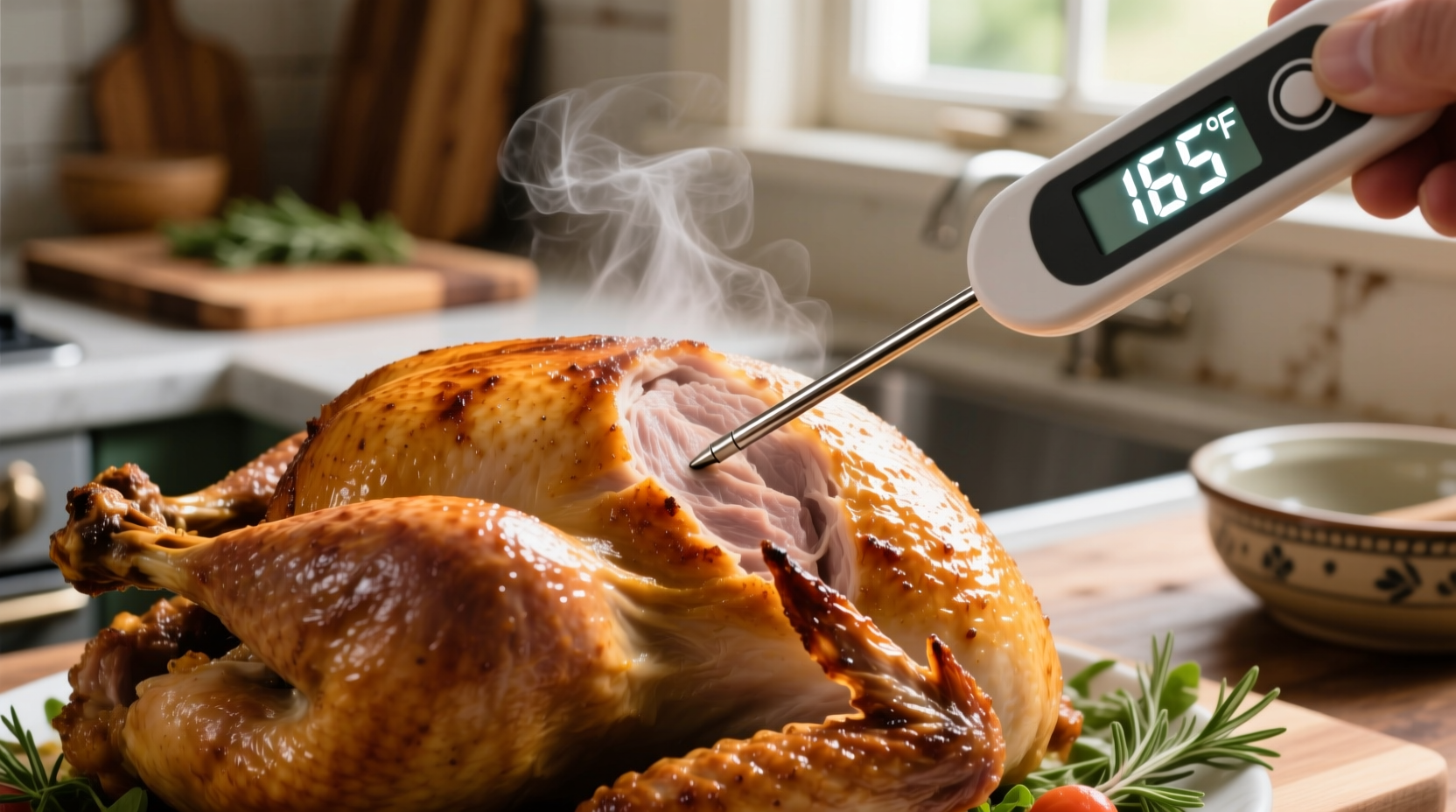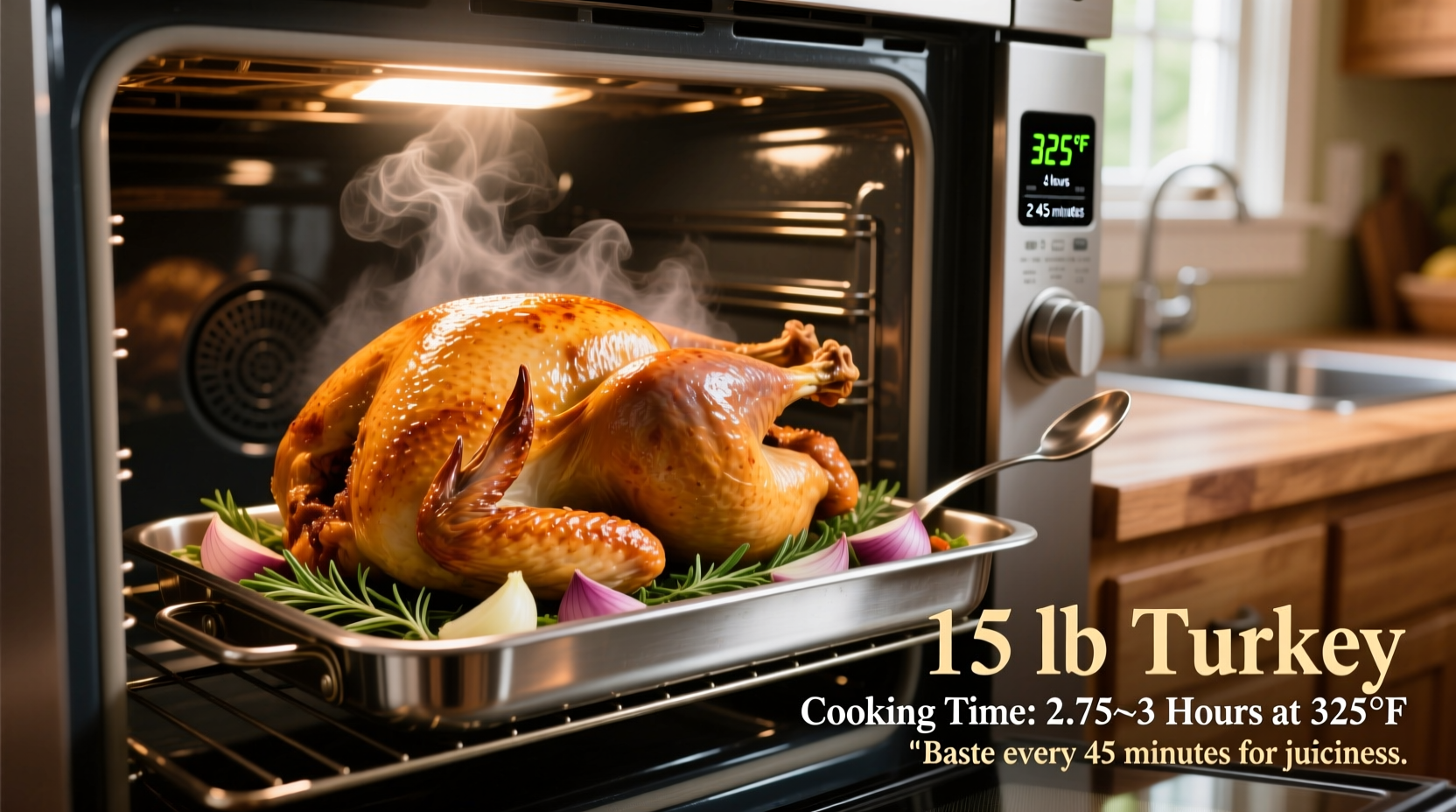Planning Your Turkey Cooking Timeline
Proper planning ensures your 15-pound turkey cooks evenly and safely. Start by confirming your turkey is fully thawed—allow 3-4 days in the refrigerator for a bird of this size. Rushing thawing compromises food safety and cooking consistency.
Choose between roasting at 325°F (recommended for even cooking) or 350°F (slightly faster but risks drier meat). The USDA Food Safety and Inspection Service confirms both temperatures work when monitored properly. Remember: lower temperatures require longer cooking but yield juicier results.
Preparation Essentials for Perfect Results
Before placing your turkey in the oven, follow these critical preparation steps:
- Dry the skin thoroughly with paper towels to promote crispiness
- Season generously under the skin and on the surface for maximum flavor penetration
- Insert thermometer into the thickest part of the breast, avoiding bone
- Consider tenting the breast with foil during the first 2 hours to prevent overcooking

Accurate Cooking Time Calculation
While general guidelines help, precise timing depends on multiple factors. Use this reference table for different scenarios:
| Cooking Method | Temperature | 15-Pound Turkey Time | Critical Checkpoint |
|---|---|---|---|
| Unstuffed | 325°F | 3 to 3.75 hours | 165°F in breast |
| Unstuffed | 350°F | 2.75 to 3.5 hours | 165°F in breast |
| Stuffed | 325°F | 3.5 to 4.25 hours | 165°F in breast AND stuffing |
Important note: stuffed turkeys require additional time because the cavity contents must also reach 165°F. The USDA strongly recommends cooking stuffing separately for food safety, as uneven heating in stuffed birds creates potential bacterial growth zones.
Monitoring Progress Without Sacrificing Heat
Resist the urge to constantly open the oven door—each peek drops the temperature significantly. Instead:
- Set a timer for 2.5 hours before checking
- Use an oven-safe thermometer for continuous monitoring
- Check temperature only during necessary basting intervals
- Calculate remaining time based on current internal temperature
When basting, work quickly to minimize heat loss. Better yet, consider self-basting techniques like butter under the skin to reduce oven openings.
Verifying Doneness: Beyond the Timer
Timer-based cooking leads to undercooked or dry turkey. The USDA Food Safety and Inspection Service emphasizes that visual cues alone aren't reliable. Always use a digital thermometer to confirm:
- 165°F in the thickest part of the breast
- 170°F in the thigh (without touching bone)
- 165°F in stuffing if cooked inside the bird
Remove the turkey when the breast reaches 160°F—it will continue cooking during resting to reach the safe 165°F threshold. This prevents overcooking while ensuring safety.
Essential Resting Period for Juicy Results
After removing your 15-pound turkey from the oven, let it rest for 20-30 minutes before carving. This critical step allows juices to redistribute throughout the meat. Cutting too soon releases moisture, resulting in dry turkey.
Cover loosely with foil during resting—tightly sealed foil creates steam that softens the crispy skin you worked so hard to achieve. Use this time to prepare gravy with the pan drippings.
Troubleshooting Common Cooking Issues
Even with careful planning, challenges arise. Here's how to handle them:
- Turkey cooking too fast: Reduce oven temperature by 25°F and tent breast with foil
- Turkey cooking too slow: Verify oven temperature with independent thermometer
- Uneven browning: Rotate pan 180 degrees halfway through cooking
- Dry breast meat: Next time, try brining or butter-under-skin technique
Remember that oven calibration varies significantly. A $10 oven thermometer provides more reliable data than built-in dials, preventing many common cooking issues with your 15-pound turkey.
Food Safety Considerations for Holiday Cooking
According to FoodSafety.gov, improper turkey handling causes thousands of foodborne illness cases annually. Follow these critical safety practices:
- Never thaw turkey at room temperature
- Wash hands thoroughly after handling raw poultry
- Clean all surfaces that contact raw turkey
- Discard giblets from cavity before cooking
- Refrigerate leftovers within 2 hours of cooking
When in doubt about doneness, check the temperature again. Undercooked turkey risks salmonella and campylobacter exposure, while slightly overcooked turkey remains safe to eat.











 浙公网安备
33010002000092号
浙公网安备
33010002000092号 浙B2-20120091-4
浙B2-20120091-4